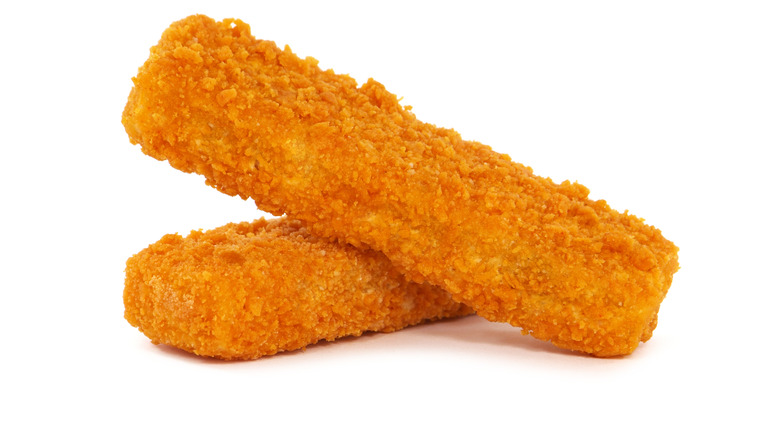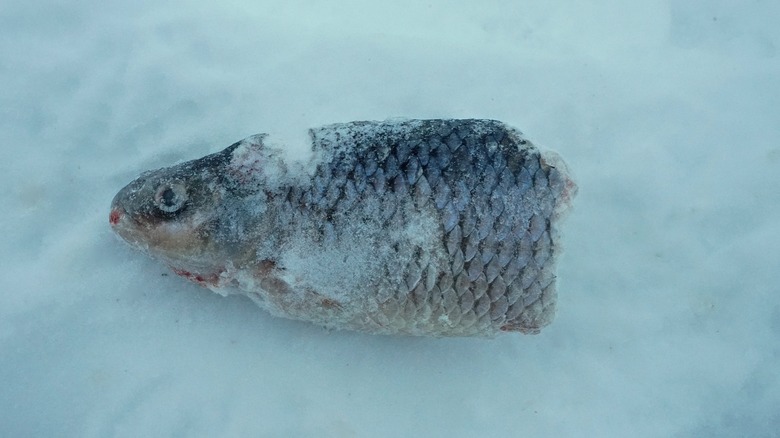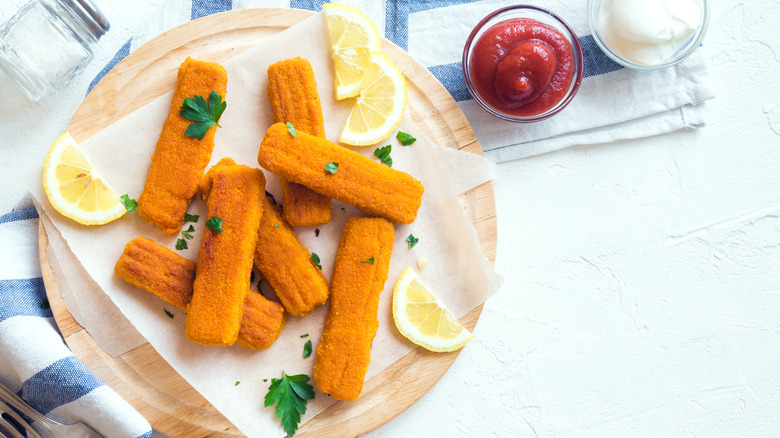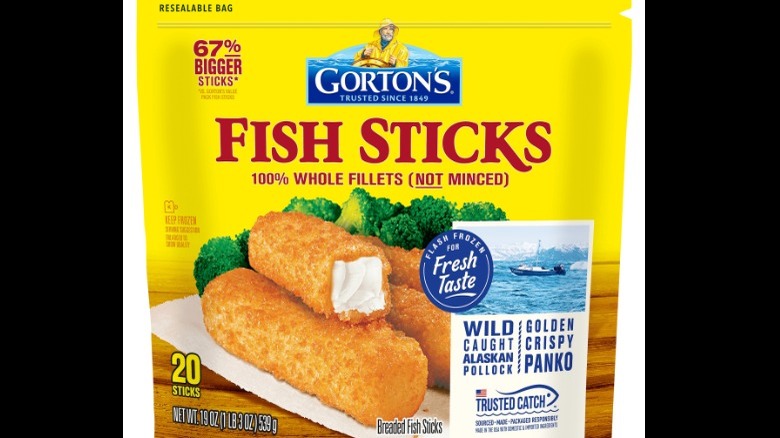The Marketing Campaign That Helped Make Fish Sticks An American Staple
Fish sticks are the American cousins of British fish & chips: they may seem to speak the same language of white fish meat enclosed in a fried batter exterior, but American fish sticks tend to be smaller, and sometimes are even made out of a fish paste and then molded into their distinctive rectangular shape.
Fish & chips date back to the 19th century, whereas American fish sticks, also called fish fingers, are a relatively newer invention pioneered by canning businessman E. Robert Kinney in the 1950s. At the time, fish was consumed considerably less frequently than it is today. Fewer Americans were wanting to eat fish at the time, and certainly, nobody was crying out for a food like fish sticks to be invented — that is until a marketing campaign made fish sticks an indelible part of the American culinary landscape.
Turning a frozen fish into a stick
Fishers of yesteryear didn't have the technological means to properly store and preserve their goods, and so once upon a time, they froze their fish in ice blocks while still at sea. There was a catch to getting their catch, however: one had to hack at the ice block to retrieve a fish, which usually resulted in messy splinters that appealed to nobody. Fish bricks were the next step in the progressive evolution of frozen fish delights, which were made of frozen minced fish meat in blocks. Yet fish bricks still weren't an appealing foundation to build a love for fish.
Gorton's, a Massachusetts-based company pioneered the fish stick, a product that was modeled after the hot dog — an easy-to-prepare food that just needed heating. The appearance and taste also closely resembled the more familiar chicken tender. The market for the frozen fish stick was gelling into place: freezers were becoming more common in homes, with 16 million Americans owning a freezer by the '60s. The only problem was that most people didn't even know what a fish stick was.
1953: A trio of fish stick mongers go to market, one cries for fish the loudest
All that was needed was a marketing campaign, which included magazine and newspaper articles that advertised a "delicious and healthy alternative to stinky at-home fish processing and cooking."
Gorton's wasn't the only company to push fish sticks on Americans. In 1953, two other companies, Fulham Brothers and General Foods' Birds Eye also hit frozen supermarket aisles. Birds Eye label once had an entire lineup of frozen, rectangular dinner foods, which were made up of chicken, ham, veal, eggplant, and even dried lima bean. The day after their fish sticks hit shelves, one report by the New York Times reported that their product would give "a much-needed lift to the fishing industry". The implied message: buying fish sticks meant supporting an American business.
But Gorton's was the strongest at marketing. Their director of advertising, Paul Jacobs, bought an endorsement in Parents Magazine with his sheer conviction for the product, and glibly marketed the fish stick to buyers in the form of a story, pitching the product as a symbolic "tribute to the ingenuity of the American businessman." When no Americans were singing the praises of fish sticks, much less talking about them, Jacobs took out ads that did adjust that, and even dubbed them a "modern luxury," turning them into a status symbol.
Fish sticks make their way into American schools and float to the top during the pandemic
A year later, another stroke of luck hit the fishing industry in the form of the Saltonstall-Kennedy Act, passed in 1954, which gave generous financial support to the commercial fishing industry. Since national school lunch programs had just launched a mere eight years prior, fish sticks made their way onto school menus, which meant that fish sticks were becoming a very integral and influential part of American education. This arm of influence has still been used in recent years — in 2014, when frozen fish sales were flagging, they looked to schools to boost sales and build loyal customers.
Today, fish sticks are mainly being marketed as being a sustainable seafood choice (it's complicated though) and to appeal to a younger generation. Case in point: Birds Eye has recast their mascot several times, and in 2018 swapped out their old grandpa sailor for a sexier, younger silver fox. No matter who's pushing fish sticks, demand hasn't lessened. One 2022 report found that the pandemic has boosted frozen seafood sales which continue to rise, which means that fish sticks will remain a major part of the American diet.



